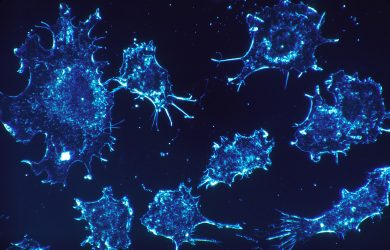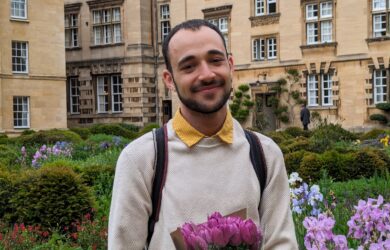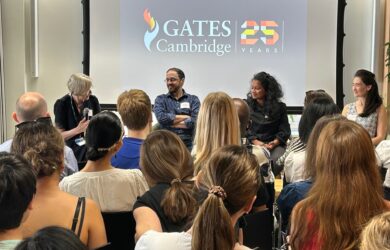A new paper discusses the latest scientific thinking on gene expression and regulation.
Why do some people develop diseases when they carry a particular gene while others don’t? Increasing evidence indicates the answer partly lies in the variable nature of gene expression which makes all of our cells unique despite sharing the same genomic information. A new paper co-authored by a Gates Cambridge scholar seeks to clarify the latest scientific thinking on gene expression and regulation.
The paper, Interplay between gene expression noise and regulatory network architecture, is published in Trends in Genetics. Lead author is Guilhem Chalancon [2011], who is doing in PhD in Molecular Biology with the support of a Gates Cambridge scholarship.
The article discusses the interplay between gene expression noise and gene regulatory network at different levels of organisation, ranging from a single regulatory interaction to entire regulatory networks. It also considers how this interplay impacts a variety of phenomena, such as pathogenicity, disease, adaptation to changing environments, differential cell-fate outcome and incomplete or partial penetrance effects. In addition, it highlights recent technological developments that permit measurements at the single-cell level and discusses directions for future research.
Earlier this week, Guilhem also had an article commenting on the two recent studies investigating the adaptation of the bacterium Bacillus subtilis to environmental stresses, all published in the prestigious Science journal.
Guilhem says: “These articles do not present the results of my own research, but aim at providing new insights and integrate emerging concepts on the way cells deal with the complex regulation of gene expression.”
Guilhem’s research involves studying the role that variability of gene expression plays in cell regulation. The goal of his PhD is to understand the molecular features underlying the constraints of gene expression variability. Through doing this, he says, he hopes to find out what benefits cell survival and how the expression of genes can be regularised through the development of appropriate drugs.












